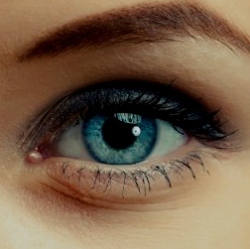
The Argus II implant first gained market approval in the US in 2013. The ambitious prosthesis is back, with researchers now looking to utilize the technology to treat patients with age-related macular degeneration (AMD). The effort forms part of a feasibility study, and early results are positive.
The Argus II Retinal Prosthesis System, built by Second Sight, is designed to stimulate a patient’s remaining retinal cells, allowing them to obtain useful visual information. Images are captured by a small, glasses-mounted camera, converted into electrical pulses, and wirelessly transmitted to electrodes implanted onto the surface of the retina.
Providing the implant works as intended, the patient will perceive patterns of light, which they can learn to interpret, thus regaining some degree of sight. It’s software-based, and will likely provide improved results as testing continues.
Back in 2013, the implant received market approval from the Food and Drug Administration (FDA) in the US, for the treatment of Retinitis Pigmentosa (RP) – a degenerative condition that affects the peripheries of patient vision. Fast-forward two years and zip across the Atlantic, and the device is now being tested for the first time on a patient suffering from dry AMD . The big difference here is that AMD affects central vision, rather than peripheral sight.
The procedure was carried out at the Manchester Royal Eye Hospital in the United Kingdom, by Dr. Paulo Strange MD. The device was activated two weeks after being implanted, with early tests indicating that the 80-year-old subject, Raymond Flynn, was already receiving useful vision from the system.
Though this is only the first test using the implant for AMD sufferers, those initial positive results are extremely promising. In the long run, it could provide a new course of action for the estimated two million people who are legally blind due to AMD, for which there are few approved treatments.
"We are very excited to begin such an important study for this patient population and to have the opportunity to help a great deal more people living with blindness," says Second Sight’s Executive Officer, Dr. Robert Greenberg. "Though it is obviously still early in this clinical trial, we are very encouraged by these initial results."
